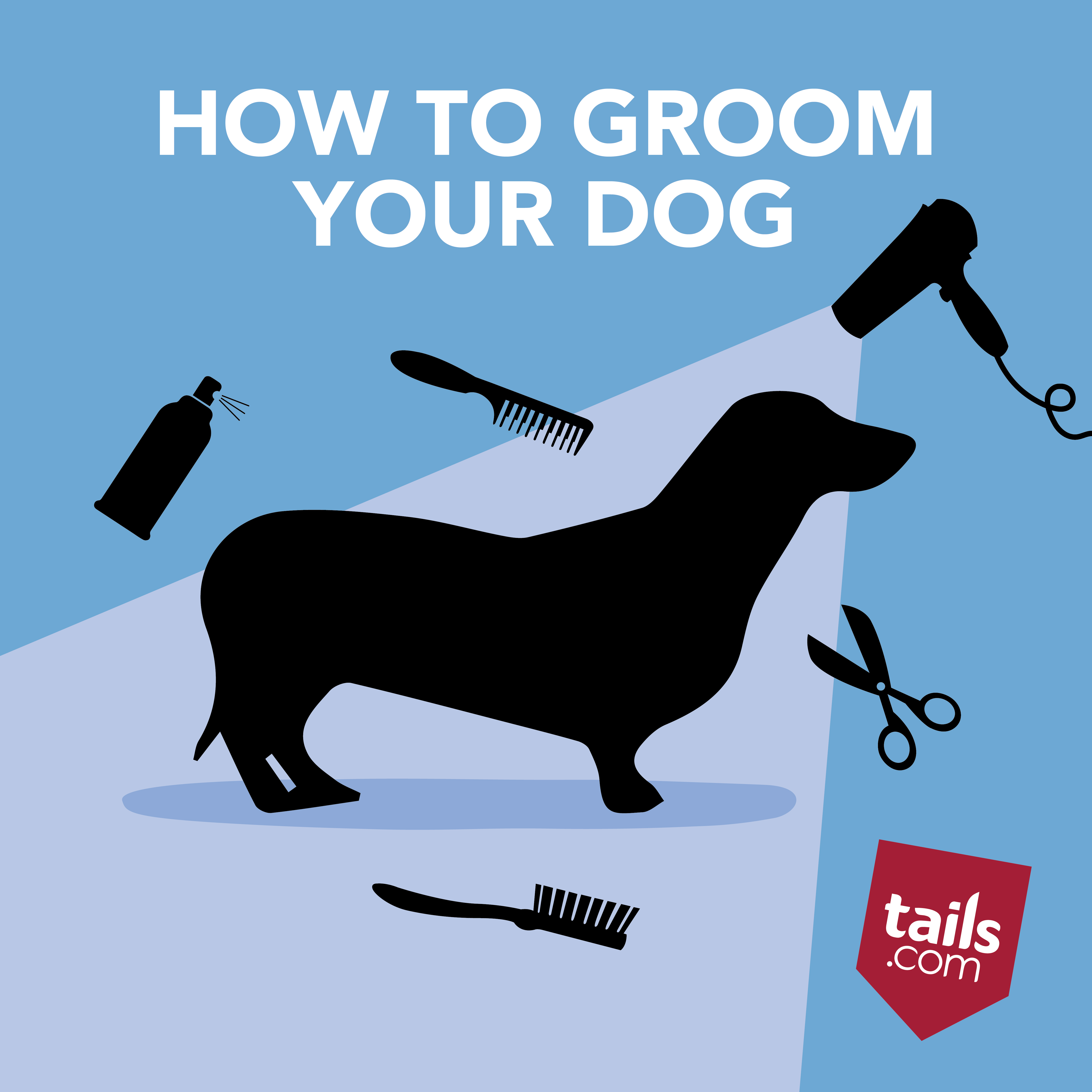It’s time to talk about coats. Not the winter-warmer kind, but your dog’s kind. Has your dog got a coat that’s so thick they actually like to lie in snow? Or have you got a rough and curly coat to deal with? A delicate one that’s peach-soft just like their ears? Or long-haired and like a shampoo ad?
Dog’s coats are unique. And giving them a good grooming is an essential part of looking after them. So it’s good to know how to do it – and how often.
For some dogs, a calming and bonding grooming session with you is not an option when there’s stuff to do and things to sniff. Sometimes it just takes a bit of practice. And sometimes, you’ve just got to hand it to the professionals.
Frequency matters – what’s so good about dog grooming?
- Reduces shedding – brushing out excess hair is better for your dog and better for your furniture
- Bonding session – most dogs love to be stroked, so a gentle grooming session is something they can enjoy
- Removes debris and tangles – tangles and mud can irritate and lead to scratching and inflammation, so stop that itch-scratch cycle before it starts
- Gets them comfy – giving their coat a good air
- Hey good looking – it keeps them looking their best, so praise them
- Softly softly – a well-groomed dog is nicer to stroke
Health check
A regular grooming session gives you the chance to check over your dog. As you get to know the shape of your dog, you can look out for signs of ticks, wounds, dirty ears and eyes as well as checking their body condition (i.e. are they turning into a chunky monkey or losing weight?)
Your dog grooming toolkit explained
When it comes to the professionals, their toolkit isn’t going to look like yours. Professionals use a range of equipment to trim, clip, rake, detangle, brush, comb, stimulate the skin and remove debris. But for the home groomer, you’ll need a comb, brush, scissors, detangling spray, ear and eye wipes, plus a grooming rug or mat so you don’t ruin your floors…
Brushes: there are three main ones to choose from – slicker brushes, bristle brushes and wire pin brushes. Bristle brushes can be used on most types of coats, medium to long coats and curly coats benefit from wire pin brushes. Slicker brushes smooth aren’t just for getting a great shine on (as the name suggests). They’re awesome at getting out tons of dead hair and undercoat, too – especially in thicker coats.
Rakes: Rakes are great for double coated dogs – designed to penetrate through the overcoat and remove debris and loose hairs from the undercoat. They can also help with detangling knots and matted sections.
Combs: Use combs on small, specific areas to gently tease out matts and tangles and around sensitive areas like ears and the mouth.
Tip!: Check the teeth length to make sure it’s effective for your dog’s size and where you want to use it.
Shedding tools: Get grooming gloves for soft coats and de-shedders for coarser or longer haired dogs. These will gently remove the dead hairs from the undercoat and leave behind the healthy growing overcoat.
Good to know: It just takes a couple of short sessions to see a huge improvement!
Detangling sprays: If you’re using a detangling spray, apply it early – it helps soften any matted hair before you rake or comb.
Coat conditioner: Finish a grooming session with a coat and skin conditioning spray and you’ll increase the shine and apply nutrients directly to the skin.
Tip! These sprays are fragranced so don’t overspray – lightly mist
When to call in the professionals
Regular brushing and dematting might take a bit of practice, so start short and give it a go. For some dogs, regular professional grooming sessions are essential anyway – as their coats, size and type need extra care, handling or expertise.
As anyone with an Afghan Hound will tell you, sometimes you’ve just got to give your dog’s grooming care to the experts. If you’re not sure, or there’s something your grooming skills are not set up to tackle, reach out and ask a professional. Your dog will thank you for it!


Really very happy to say,your post is very interesting to read.I never stop myself to say something about it.You’re doing a great job.Keep it up
Hi im not sure if i can ask about this here or if u can help but my dog flo has sat in tar while out with ne cleaning the entrance at the back i have tried to wash it out an comb as much as i can but it seems its stuck to the skin as it is in the middle of her gentle areas can u please help
Hi Danielle,
Thanks for getting in touch.
We are sorry to hear that Flo has got tar on her skin and coat. Tar is a difficult substance to remove, and depending on the type of tar, sometimes the best course of action is to cut the affected part of your dog’s coat and let it grow back. However, as you’ve mentioned it is on her sensitive areas as well, we’d suggest that you take her to your vet for help and advice, as it could cause irritation to her skin.
Best wishes,
The tails.com team.
I was searching over search engines about dog walking.
Well i like your high quality blog posting abilities. You’re doing a great job.Keep it up.
Hi Michael,
Thanks for getting in touch, we are really glad that you like our blog.
If there are any topics that you would like to see covered, please feel free to let us know your suggestions, as we are always interested in our reader’s feedback.
Best wishes,
The tails.com team.